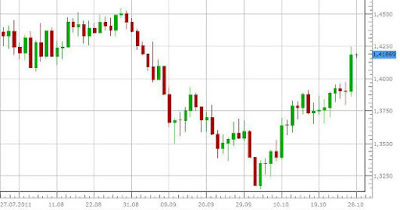"Why," I have often asked myself, "has a system which has been around so long almost completely unknown in the West?" Were the Japanese trying to keep it secret? Was it the lack of information in the United States? I don't know the answer, but it has taken years of research to fit all the pieces together. I was fortunate in several ways.
Perhaps my perseverance and serendipity were the unique combination needed that others did not have. In 1987, I became acquainted with a Japanese broker. One day, while I was with her in her office, she was looking at one of her Japanese stock chart books (Japanese chart books are in candlestick form). She exclaimed, "look, a window." I asked what she was talking about. She told me a window was the same as a gap in Western technicals. She went on to explain that while Western technicians use the expression "filling in the gap" the Japanese would say "closing the window." She then used other expresions like, "doji" and "dark-cloud cover." I was hooked. I spent the next few years exploring, researching, and analyzing anything I could about candlestick charts.
It was not easy. There are scant English publications on the subject. My initial education was with the help of a Japanese broker and through drawing and analyzing candlestick charts on my own. Then, thanks to the Market Technicians Association (MTA) library, I came across a booklet published by the Nippon Technical Analysts Association called Analysis of Stock Price in Japan. It was a Japanese booklet which had been translated into English. Unfortunately, there were just ten pages on interpreting candlestick charts. Nonetheless, I finally had some English candlestick material. A few months later, I borrowed a book that has had a major influence on my professional life. The MTA office manager, Shelley Lebeck, brought a book entitled The Japanese Chart of Charts by Seiki Shimizu and translated by Greg Nicholson (published by the Tokyo Futures Trading Publishing Co.) back from Japan. It contains about 70 pages on candlestick charts and is written in English. Reading it was like finding an oasis in a desert. As I discovered, while the book yielded a harvest of information, it took some effort and time to get comfortable with its concepts. They were all so new. I also had to become comfortable with the Japanese terminology. The writing style was sometimes obscure. Part of this might have resulted from the translation. The book was originally written in Japanese about 25 years ago for a Japanese audience. I also found out, when I had my own material translated, that it is dreadfully difficult to translate such a specialized subject from Japanese to English. Nonetheless, I had some written reference material. This book became my "Rosetta Stone." I carried the book with me for months, reading and rereading, taking copious notes, applying the candlestick methods to the scores of my hand-drawn candlestick charts. I chewed and grinded away at the new ideas and terminology. I was fortunate in another sense. I had the help Introduction 3 of the author, Seiki Shimizu, to answer my many questions. Although Mr. Shimizu does not speak English, the translator of the book, Greg Nicholson, graciously acted as our intermediary via fax messages. The Japanese Chart of Charts provided the foundation for the rest of my investigation into candlesticks. Without that book, this book would not have been possible. In order to continually develop my abilities in candlestick charting techniques, I sought out Japanese candlestick practitioners who would have the time and inclination to speak with me about the subject. I met a Japanese trader, Morihiko Goto who had been using candlestick charts and who was willing to share his valuable time and insights. This was exciting enough! Then he told me that his family had been using candlestick charts for generations! We spent many hours discussing the history and the uses of candlestick charts. He was an invaluable storehouse of knowledge. I also had an extensive amount of Japanese candlestick literature translated. Obtaining the original Japanese candlestick information was one problem. Getting it translated was another. Based on one estimate there are probably fewer than 400 full-time Japanese-to-English translators in America (this includes part-time translators)11 had to find a translator who could not only translate routine material, but also the highly specialized subject of technical analysis. In this regard I was lucky to have the help of Languages Services Unlimited in New York. The director, Richard Solberg, provided indispensable help to this project. He was a rarity. He was an American fluent in Japanese who understood, and used, technical analysis. Not only did Richard do a wonderful job of translating, but he helped me hunt down and obtain Japanese candlestick literature. Thanks to his help I might have the largest collection of Japanese books on candlesticks in the country. Without Richard this book would have been much less extensive.
Before my introductory article on candlestick charts appeared in late 1989, there were few services offering candlestick charts in the United States. Now a plethora of services offer these charts. These include:
Bloomberg L.P. (New York, NY);
Commodity Trend Service Charts (North Palm Beach, FL); >
CompuTrac™ (New Orleans, LA);
CQG (Glenwood Springs, CO);
Ensign Software (Idaho Falls, ID);
FutureSource™ (Lombard, IL); and
Knight Ridder-Commodity Perspective (Chicago, IL).
By the time you read this book, there probably will be additional services providing candlestick charts. Their popularity grows stronger every day. The profusion of services offering the candlestick charts attests to both their popularity and their usefulness.






